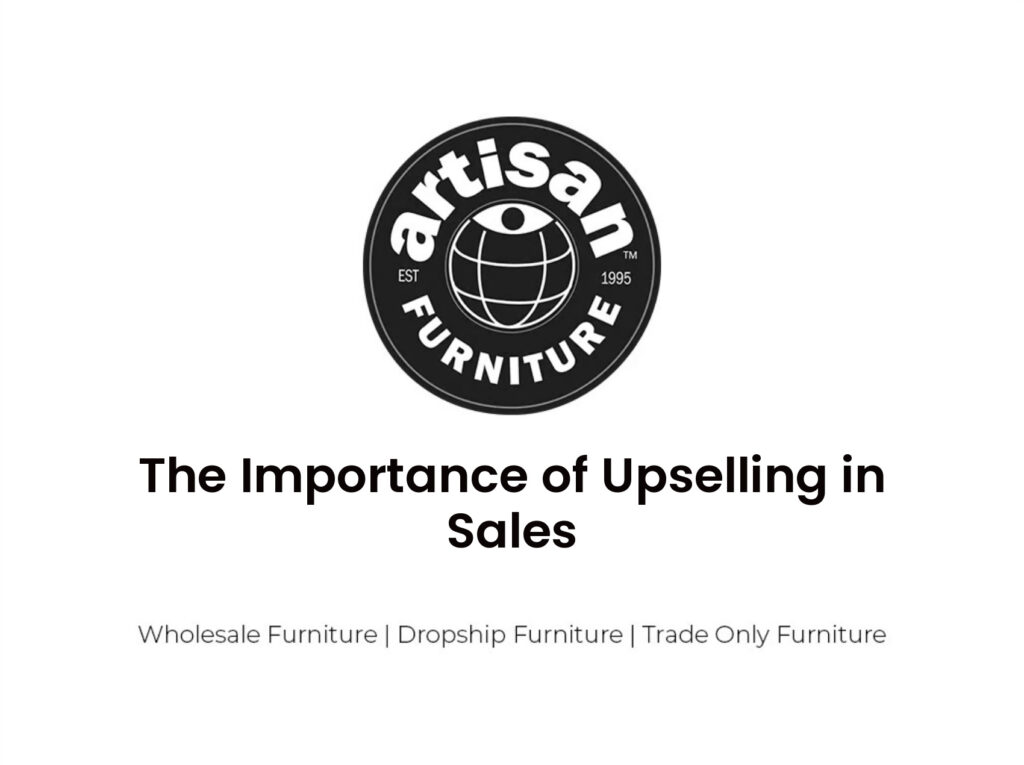The Importance of Upselling in Sales
Upselling plays a crucial role in sales by persuading customers to purchase higher-priced items or additional products, thereby increasing order value and maximizing profit. It fosters deeper customer relationships, generates additional revenue, and is more cost-effective than acquiring new customers. With a higher likelihood of selling to existing customers, upselling boosts Customer Lifetime Value (CLV) and overall revenue. This article explores the benefits of upselling, compares it to acquiring new customers, and provides best practices for successful upselling strategies. Real-life examples highlight its effectiveness in driving sales growth.
Table of Contents
ToggleThe Benefits of Upselling for Sales Growth
Upselling offers numerous benefits for sales growth, such as building deeper customer relationships, generating additional revenues, and increasing Customer Lifetime Value (CLV). By upselling, salespeople have the opportunity to create a stronger connection with customers. They can understand their needs and preferences better, resulting in a more personalized shopping experience. Additionally, upselling allows businesses to increase their revenues by encouraging customers to purchase higher-priced products or add-ons. This not only boosts the immediate sales but also contributes to the long-term success of the company. Moreover, upselling helps in increasing the Customer Lifetime Value (CLV) by maximizing the value of each customer. By offering upgraded versions or complementary products, businesses can enhance customer satisfaction and loyalty, leading to repeat purchases and higher profits in the long run.
Building Strong Customer Relationships Through Upselling
To cultivate strong customer relationships, businesses can foster trust and loyalty by offering personalized recommendations for additional products or upgrades. This approach not only increases sales but also demonstrates that the business understands and values the customer’s needs and preferences. By providing personalized recommendations, businesses can enhance the customer’s shopping experience and show that they are committed to providing the best solutions.
Here are three ways that businesses can build strong customer relationships through upselling:
-
Tailored Recommendations: By using customer data and preferences, businesses can offer relevant and customized recommendations for additional products or upgrades. This personalization shows that the business understands the customer’s unique needs and can provide solutions that meet their specific requirements.
-
Exceptional Customer Service: Upselling provides an opportunity for businesses to go above and beyond in terms of customer service. By offering personalized recommendations and assisting customers in making informed decisions, businesses can create a positive and memorable experience that strengthens the customer relationship.
-
Value-Added Benefits: Upselling allows businesses to provide additional value to customers. By recommending products or upgrades that enhance the customer’s original purchase, businesses can demonstrate the benefits of these additions and show that they genuinely care about the customer’s satisfaction and success.
Upselling Vs. Acquiring New Customers: Cost and Success Comparison
Acquiring new customers can be more costly and less successful compared to upselling to existing customers. Businesses often focus on acquiring new customers as a way to grow their customer base, but the reality is that it can be an expensive and challenging process. On the other hand, upselling to existing customers is a more cost-effective strategy that can yield better results.
To illustrate this point, let’s take a look at a comparison between acquiring new customers and upselling to existing customers:
| Acquiring New Customers | Upselling to Existing Customers |
|---|---|
| Requires marketing efforts such as advertising and lead generation | Utilizes existing customer base and relationship |
| Involves educating potential customers about your products or services | Customers are already familiar with your brand and offerings |
| May have a lower conversion rate due to unfamiliarity | Higher conversion rate due to existing trust and loyalty |
This table clearly demonstrates that upselling to existing customers is a more efficient and effective way to increase sales and revenue. By leveraging the trust and relationship already established with existing customers, businesses can maximize their profits without incurring the high costs associated with acquiring new customers.
Boosting Revenue With Effective Upselling Strategies
By implementing effective upselling strategies, businesses can significantly boost their revenue and maximize their profits. Here are three key strategies to consider:
-
Personalize the upsell: Tailor the upselling offers to each customer’s specific needs and preferences. By understanding their purchasing history and preferences, businesses can offer relevant and compelling upsell options that are more likely to resonate with customers.
-
Highlight the value: Clearly communicate the benefits and value of the upsell to the customer. Show them how the higher-priced product or additional features will enhance their experience or solve a problem they may not have considered. This will help customers see the value in the upsell and be more inclined to make the purchase.
-
Offer incentives: Provide incentives such as discounts, freebies, or exclusive offers to make the upsell more enticing. Offering a special deal or limited-time promotion can create a sense of urgency and encourage customers to take advantage of the upsell opportunity.
Maximizing Customer Lifetime Value Through Upselling
Maximizing customer lifetime value can be achieved by effectively implementing upselling strategies that focus on personalization, value highlighting, and offering incentives. By tailoring upselling offers to individual customers, businesses can create a personalized shopping experience that increases customer satisfaction and loyalty. Highlighting the value of upgraded or additional products can help customers see the benefits and justify the higher cost. Offering incentives such as discounts, rewards, or exclusive offers can provide an extra push for customers to make a purchase. To paint a clearer picture, here is a table showcasing different upselling strategies:
| Upselling Strategies | Examples |
|---|---|
| Personalization | Recommending products based on preferences |
| Value Highlighting | Showing the benefits of upgraded versions |
| Offering Incentives | Providing discounts or rewards |
| Creating Urgency | Limited time offers or exclusive deals |
| Cross-selling | Suggesting complementary products |
Effective implementation of these strategies can lead to increased customer lifetime value and ultimately, higher revenue for businesses.
Understanding the Difference Between Upselling and Cross-Selling
Understanding the difference between upselling and cross-selling is essential for businesses to effectively recommend products and increase sales. Here are three key points to consider:
-
Upselling: This sales technique aims to persuade customers to purchase a more expensive or upgraded version of a chosen item. It can also involve suggesting add-ons or complementary products to increase the sale value. Upselling helps build deeper relationships with customers and can generate additional revenues.
-
Cross-selling: Unlike upselling, cross-selling recommends related complementary products. For example, suggesting socks or shoelaces when a customer is purchasing sneakers. Cross-selling expands the customer’s options and can lead to increased sales and customer satisfaction.
-
Different approaches: Upselling focuses on persuading customers to buy a more expensive version of a product, while cross-selling suggests additional items that complement the original purchase. By understanding these differences, businesses can tailor their recommendations to meet customer needs and preferences, ultimately driving revenue growth.
Best Practices for Successful Upselling in Sales
To successfully upsell in sales, businesses should prioritize providing value and options to customers while allowing them the freedom to make their own decisions. By implementing best practices, businesses can increase their chances of successfully upselling and generating more revenue. One effective strategy is to display recommendations before, during, and after purchase, giving customers the opportunity to consider additional options. Incentivizing upsells with rewards or discounts can also encourage customers to upgrade their purchase. Using side-by-side comparisons to demonstrate the value of the upsell and keeping the price range reasonable can further enhance the success of upselling efforts. It is important for businesses to avoid being pushy and instead give customers space to decide. By focusing on giving customers value and options, businesses can create a positive upselling experience and maximize their sales potential.
| Best Practices for Successful Upselling |
|---|
| – Display recommendations before, during, and after purchase |
| – Incentivize upsells with rewards or discounts |
| – Use side-by-side comparisons to demonstrate value |
| – Keep the upsell within a reasonable price range |
| – Avoid being pushy and give customers space to decide |
Real-Life Examples of Successful Upselling Techniques
Real-life businesses have effectively implemented upselling techniques, such as Dollar Shave Club reminding customers to buy extra razor blades or moisturizers. These examples showcase the power of upselling in driving additional sales and increasing customer lifetime value. Here are three more real-life examples of successful upselling techniques:
-
Amazon: When customers are about to purchase a product, Amazon suggests related items that complement their selection. This encourages customers to consider buying additional products, increasing the overall order value.
-
Starbucks: Starbucks offers customers the option to upgrade their drink size or add extra flavors or toppings for a small additional cost. This upselling technique not only increases the average transaction value but also enhances the customer experience.
-
McDonald’s: McDonald’s uses upselling techniques by offering customers the option to "upsize" their meal or add extra items like a dessert or a drink. This strategy effectively boosts sales by enticing customers to spend a little extra for a larger meal or additional items.
These real-life examples demonstrate the effectiveness of upselling in driving additional sales and increasing customer satisfaction.
Key Factors for Delivering Value and Options Through Upselling
Displaying relevant product recommendations based on customer preferences is a key factor for delivering value and options through upselling. By understanding the customer’s needs and preferences, businesses can offer personalized recommendations that enhance the customer’s shopping experience. This not only increases the chances of upselling but also helps build trust and loyalty with the customer. When customers see products that align with their interests and preferences, they are more likely to consider purchasing them. Additionally, providing options allows customers to have a choice and feel empowered in their decision-making process. By offering relevant product recommendations, businesses can effectively demonstrate the value and benefits of upgrading or purchasing additional products, ultimately leading to increased sales and customer satisfaction.



